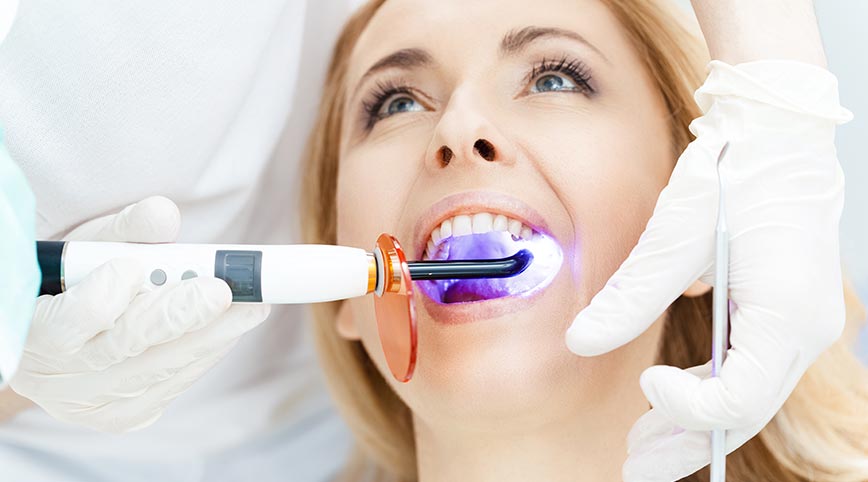A bright, white smile is a symbol of good oral health and can boost your confidence. If you’re looking to enhance the whiteness of your teeth, there are various teeth whitening options available, ranging from DIY home remedies to professional treatments offered by dentists. In this article, we’ll explore these options, their effectiveness, and the factors to consider when choosing the right teeth whitening method for you.

DIY Teeth Whitening
1. Whitening Toothpaste : Whitening toothpaste is readily available in stores and can help remove surface stains. They contain mild abrasives and sometimes peroxide to brighten teeth gradually. While they can be effective for some people, results may vary, and it may take weeks to notice a difference.
2. Over-the-Counter Whitening Strips and Gels : These products typically contain peroxide and are applied directly to the teeth. They can be effective in removing surface stains but may not address deeper discoloration. Follow the instructions carefully for the best results.
3. Activated Charcoal : Some people use activated charcoal as a natural teeth whitening remedy. It may help remove surface stains, but the long-term effects and safety are still a topic of debate among dental professionals.
Professional Teeth Whitening
1. In-Office Teeth Whitening : This is the most effective and quickest way to achieve a whiter smile. A dentist or dental hygienist applies a highly concentrated whitening gel to your teeth and uses a special light or laser to accelerate the process. In-office treatments can provide noticeable results in a single session.
2. Take-Home Whitening Kits : Dentists can provide custom-fitted trays and a professional-strength whitening gel for at-home use. These kits offer more control and can produce excellent results over a few weeks of use.
Factors to Consider
When choosing a teeth whitening method, consider the following factors:
1. Severity of Stains : DIY methods are suitable for mild surface stains, while professional treatments are more effective for deep-seated discoloration.
2. Sensitivity : If you have sensitive teeth or gums, professional treatments may be preferable, as dentists can customize the process to minimize discomfort.
3. Time Constraints : DIY methods can take longer to achieve noticeable results, while in-office treatments provide quick outcomes.
4. Cost : DIY products are generally more affordable, but professional treatments offer more predictable and long-lasting results.
5. Dental Health : Ensure your teeth and gums are in good health before undergoing any whitening treatment. Dental issues should be addressed first to avoid complications.
Maintenance and Aftercare
Regardless of the method you choose, maintaining your teeth’s whiteness requires good oral hygiene practices:
1. Regular Brushing and Flossing : Keep your teeth clean to prevent new stains from forming.
2. Limit Staining Foods and Drinks : Cut back on foods and beverages that can stain teeth, such as coffee, tea, and red wine.
3. Regular Dental Checkups : Schedule routine dental visits to monitor your oral health and touch up on whitening if necessary.
Teeth whitening options vary in terms of effectiveness, speed, and cost. While DIY methods can provide some improvement, professional treatments offer quicker and more dramatic results. Consult with your dentist to determine the best whitening option for your individual needs and enjoy the confidence of a brighter, whiter smile.
Designed By Infinite Digital